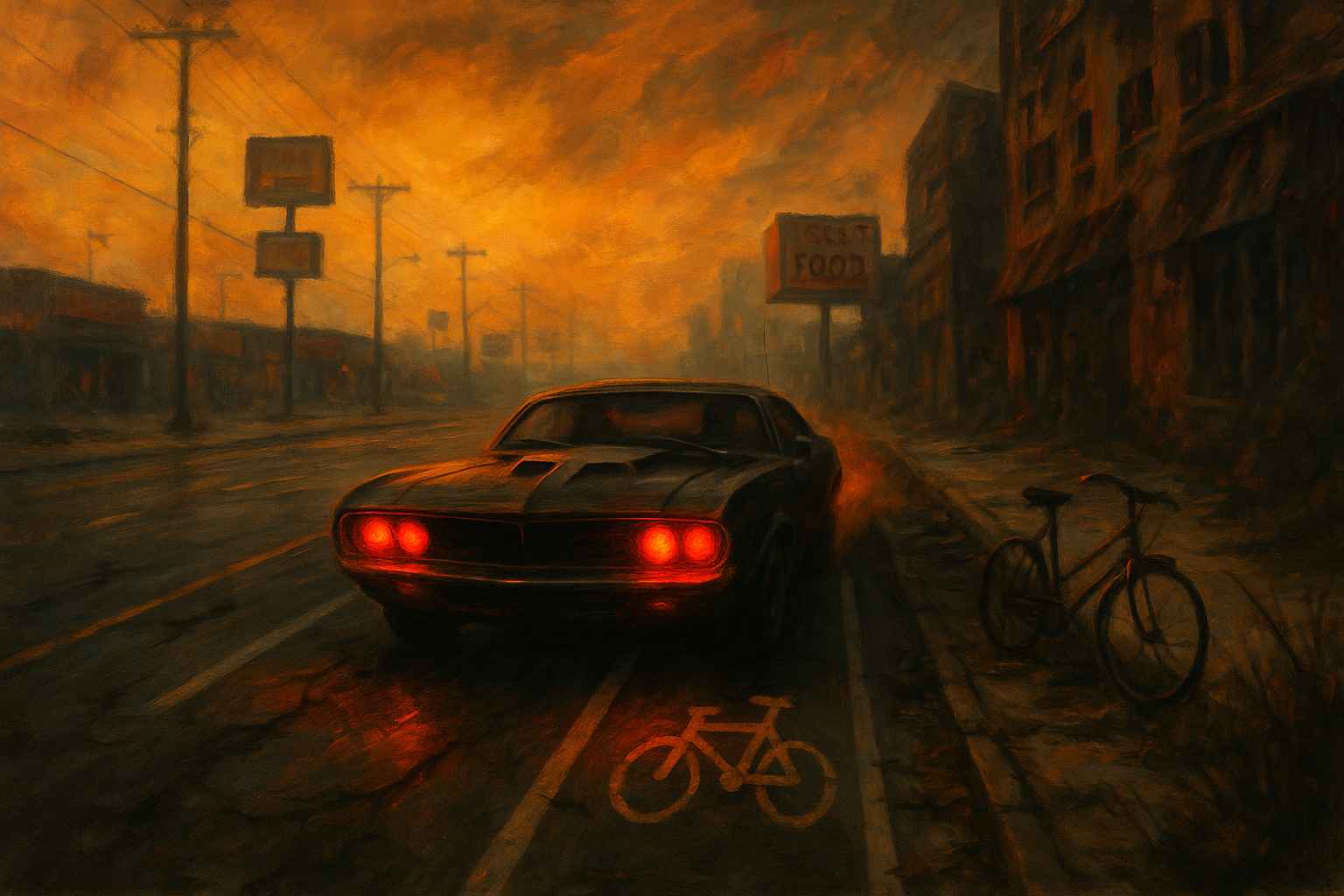Drive or Die: Killer Cars and the Urban Death Machine
Killer car movies might seem like campy horror fun, but they reveal something deeper: America’s uneasy obsession with cars. This post explores how these films reflect our real-world struggles with car-centric planning, stroads, and the rising call for walkable cities.
Death Machine by Astraea
From Duel to Rubber, and Christine to Maximum Overdrive, Hollywood has churned out a surprising number of movies about vehicles that kill. At first glance, they’re campy, low-budget horror flicks. But look closer, and these stories reflect something deeper—and darker—about our culture.
Let’s face it: America has a complicated relationship with cars.
We worship them. We build our cities around them. We advertise them as freedom, power, and identity. But we’re also terrified of them—and maybe rightfully so. Nearly 43,000 Americans die every year in car crashes. Countless more are injured. And our built environment often prioritizes car convenience over human safety, beauty, health, and community.
Killer car movies may be ridiculous—but maybe they’re accidentally honest.
The Car as Monster
Most killer vehicles in film are sleek, aggressive, and strangely beautiful. They move fast, hit hard, and don’t stop. (A theatrical version of a “hit and run”.) Whether it’s The Car (1977), a demonic black sedan with no driver, or Christine, a seductive 1958 Plymouth Fury with a jealous streak, these machines are metaphors for something more than just metal and gasoline. They represent unchecked power.
And that’s not far off from what many roads in America have become.
Machines With Minds of Their Own
When cars kill in movies, they often do so without reason—or with supernatural will. They’re beyond control, beyond logic. It’s unsettling. And in a real-world sense, that’s what a lot of pedestrians and cyclists experience when navigating streets designed for 50 mph traffic and lined with fast food, gas stations, and strip malls.
We call these places STROADS—a blend of street and road, failing to be either one well. They’re dangerous by design, and they’re everywhere. Think of any road that’s been built up near you. Chances are, that road was once a local corridor but now has become a sprawling, multi-lane hazard surrounded by parking lots and concrete devoid of any pedestrian crossings or even sidewalks. It’s not built for people—just for cars.
A Reckoning on the Asphalt
Perhaps the reason these films resonate—despite their camp—is because they echo a growing discomfort. For decades, car-centric development hollowed out towns, divided neighborhoods, and erased public spaces. But now, people are starting to fight back. We see it in the pedestrianization of city centers, the creation of greenways and bike trails, and the increasing support for transit and walkability.
Urbanism is no longer a fringe idea—it’s a survival strategy.
The Thrill of Destruction (and Maybe Catharsis)
Watching killer cars do their worst gives us a way to laugh, gasp, and maybe even grieve. These machines aren’t just villains—they’re symbols. Of poor planning. Of lost walkable pasts. Of every moment we’ve felt powerless as humans in a space built for steel.
So maybe killer vehicle movies aren’t just about death and mayhem. Maybe, beneath the screeching tires and bloody bumpers, they’re telling us something we already know:
It’s time to take the keys away from the car—and give the streets back to the people.

